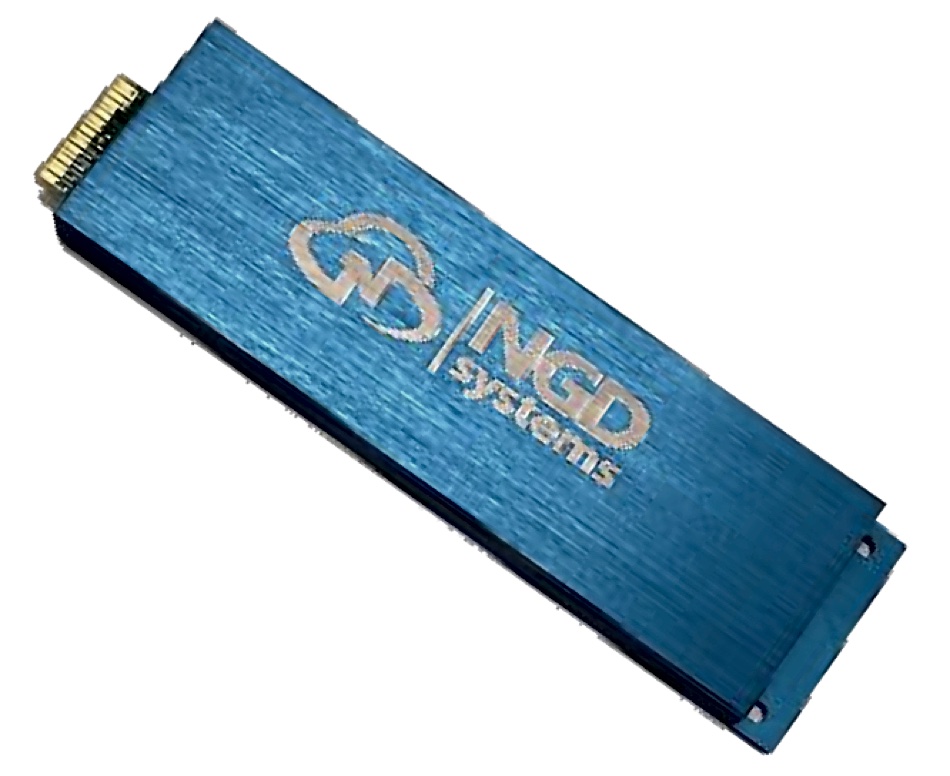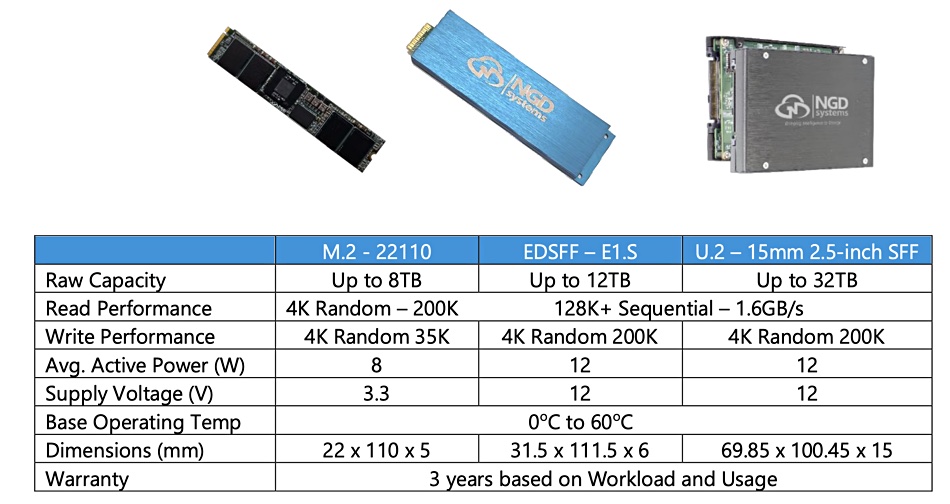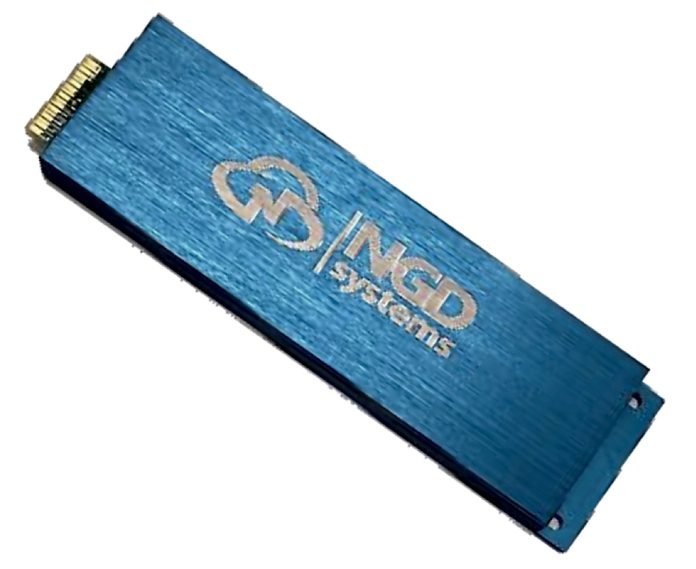NGD, the computational storage startup, has added a 12TB capacity short ruler-format drive to its lineup.
Computational drives feature an on-board processor, typically an Arm CPU, which performs repetitive and low-level operations on stored data. Typical workloads include compression, encryption, OCR, indexing, search and video transcoding.
An advantage of computational storage drives comes with large datasets. For example, 104 of the new E1.S-format Newports could hold a petabyte of data. An indexing and search operation on 1PB of data by a server CPU, reading the data in from storage, can take many minutes, perhaps more than an hour depending upon the data.
Hand the work over to computational storage, and the 104 Newport drives operate in parallel, no data is moved, the job completes in a shorter time. The server CPU is not tied up doing the work. Free of these duties, the server CPU can run more virtual machines or containerised applications.
Some specs
The E1.S. is an EDSFF (enterprise and data centre SSD Form Factor) format for flash drives that provides greater scalability, flexibility and thermal management than the current disk drive -based U.2 format and M.2 format. Kioxia announced the 4TB XD6 SSD in the E1.S format earlier this month.
NGD offers two flavours of Newport-branded products; the HCS-8100 NVMe SSDs and ICS-8100 computational storage drives with in-situ processors. Until now there have been two ICS products the 8TB M.2 ICS-8100 drive, release in June 2019. This followed the 16TB U.2 ICS-8100 drive which shipped in March 2019, and since expanded to 32TB.

An NGD table shows where the new ruler format drives sits between its M.2 and U.2 drives in capacity and performance terms.

NGD’s E1.S drive has up to 12TB of 3D NAND TLC capacity and is slower than KIoxia’s XD6, although the read-write performance profile is more balanced than Kioxia’s read-skewed drive. A lot of that is due to Kioxia use of the faster PCIe Gen 4 interface rather than PCIe Gen 3, which is used by NGD.

Although the E1.S Newport is called an up to 12TB drive, its maximum formatted capacity is 9.6TB, considerably less. A 6TB capacity model is formatted down to 4.87TB. Similar capacity reductions occur with the M.2 and U.2 Newport ICS-8100 drives.
NGD tells us that formatted capacity varies with workload. The E1.S’ maximum capacity is 11.52TB with a 7 per cent read-centric OP.








